
U.S. Department of Transportation
Federal Highway Administration
1200 New Jersey Avenue, SE
Washington, DC 20590
202-366-4000

Highway agencies in Louisiana, Mississippi, and Idaho combined the benefits of the Every Day Counts innovations on project bundling and reducing rural roadway departures to make their roads safer for drivers while using resources cost-effectively.
The Louisiana Department of Transportation and Development (DOTD) helps local agencies make safety improvements by coordinating bundling of projects. The process starts with the Louisiana Local Road Safety Program, which identifies locations in each parish with the most crashes and appropriate countermeasures for these roads. Improvements that reduce roadway departures are typically low-cost treatments such as curve signing and pavement markings to make it easier for drivers to navigate roads. They also include high-friction surface treatments (HFST) that help motorists maintain better control.
Multiple local agencies may own the roads in a parish, which creates inefficiency if each agency develops separate contracts for safety improvements. When neighboring parishes have plans to deploy the same countermeasure, it also provides an opportunity to improve efficiency. That's where bundling comes in. The Louisiana DOTD combines similar improvements in a single contract covering all project phases, from engineering to construction to inspection. Bundling these improvements leverages economies of scale while strategically addressing safety issues more rapidly and comprehensively.
Upcoming bundles the Louisiana DOTD has planned include signing and striping projects in Iberia Parish and the city of New Iberia, St. Landry and St. Martin Parishes, and Vernon and Sabine Parishes. A project bundle for the Lafayette Consolidated Government and city of Scott covers signing, striping, and HFST projects.
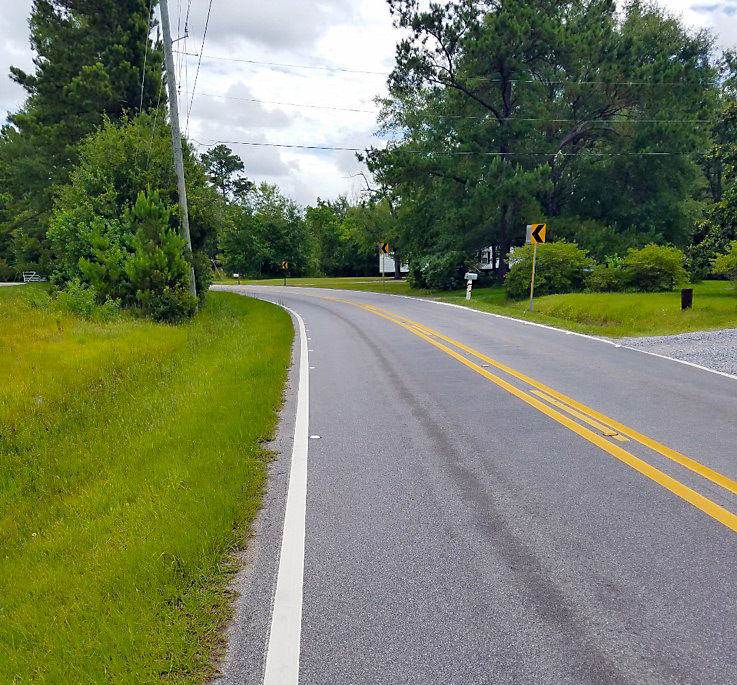
Crashes dropped 80 percent at a Jackson County, MS, location after signing, striping, and shoulder improvements were installed as part of a bundled project.
The Gulf Regional Planning Commission (GRPC), the Mississippi Gulf Coast's metropolitan planning organization, coordinated with the Mississippi Department of Transportation (MDOT) and Federal Highway Administration on a program to develop transportation safety projects. The program, for which GRPC set aside about $500,000 a year, focused on reducing lane departure crashes in Hancock, Harrison, and Jackson Counties.
GRPC used MDOT crash data to identify problem locations, most of which were curves in rural parts of each county. Applying a systemic approach, GRPC identified sites throughout the counties with similar curve characteristics, indicating a high risk for lane departure crashes. The commission bundled 24 sites for improvement into three plans, specifications, and engineering packages, one for each county. GRPC turned the bundled projects—which included signing, striping, rumble strips, shoulder improvements, and raised pavement markers—over to the counties to construct.
Before-and-after crash analysis determined that the projects resulted in a 36 percent crash reduction at the 24 sites. Two locations on Daisy Vestry Road in Jackson County experienced an 80 percent drop in crashes after the safety improvements were installed. The average cost of each site in the initial phase of projects was $80,000. As GRPC developed the second phase, it was able to cut the cost per site in half by including less asphalt work, using alternative treatments, and locating bundled project sites closer together.
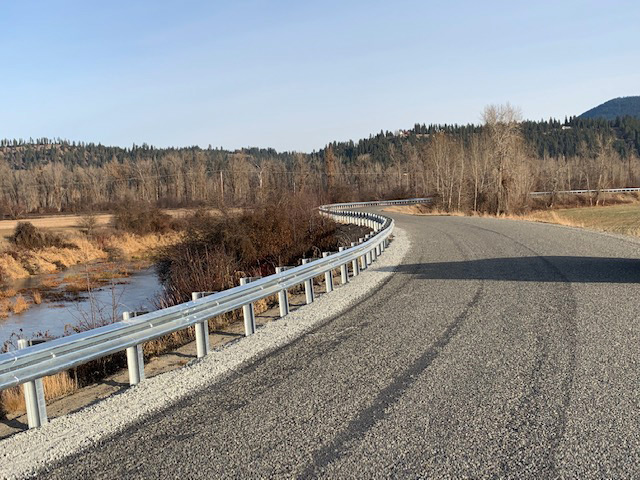
Idaho's Local Highway Technical Assistance Council bundled guardrail installation projects to increase efficiency and safety.
Idaho's Local Highway Technical Assistance Council (LHTAC), which connects local jurisdictions with resources to build and maintain their highways, used bundling to increase efficiency on guardrail installation projects. The projects, funded through the Local Highway Safety Improvement Program LHTAC administers, were aimed at reducing fatal and serious injury crashes.
"It can be more difficult for LHTAC to get small projects designed and constructed at a reasonable cost, so we are trying to get economy of scale by combining multiple projects," said Brian Wright, LHTAC's safety engineer. The bundled project is more efficient for LHTAC to administer because it involves fewer agreements and less coordination with engineers and contractors.
The latest guardrail project bundle involved three local jurisdictions in northern Idaho—Boundary County, Lakes Highway District, and Eastside Highway District—and included about 3,100 feet of guardrail. If each jurisdiction had tried to contract the work individually, there may not have been a bid submitted because of the small scope of the work. LHTAC has also bundled projects for signs installed by local jurisdictions. LHTAC plans to continue to pursue project bundling with guardrail and other safety countermeasures.
Contact Romeo Garcia of the FHWA Office of Infrastructure or David Unkefer of the FHWA Resource Center for information on project bundling.
Contact Cathy Satterfield of the FHWA Office of Safety or Dick Albin of the FHWA Resource Center for information on reducing rural roadway departures.
Each year, about 12,000 people die in crashes when vehicles veer out of their travel lanes in rural areas. "That means 30 people will die today as a result of a roadway departure crash on a rural road," said Dick Albin, Federal Highway Administration senior safety engineer.
In Every Day Counts round five (EDC-5), FHWA is targeting this deadly problem with a focus on reducing rural roadway departures (FoRRRwD). "Our mission is to reduce the potential for roadway departure crashes on all public rural roads by increasing the systemic deployment of proven countermeasures," said Cathy Satterfield, FHWA roadway safety engineer.
To achieve this mission, FoRRRwD promotes four pillars:
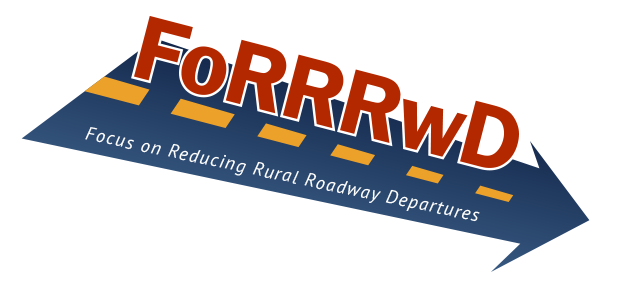
With the EDC-5 team's assistance, agencies in more than 30 States are developing, demonstrating, and assessing use of the four pillars of FoRRRwD.
The Virginia Department of Transportation (VDOT) accelerated implementation of safety improvements by dedicating more than 80 percent of its Highway Safety Improvement Program (HSIP) funds to systemic countermeasures, totaling nearly $140 million through 2025. More than half of this funding targets reduction of rural roadway departures.
VDOT's safety target-setting methodology demonstrated that systemic projects result in greater return on investment than spot improvements, prompting VDOT to shift the HSIP funding emphasis to systemic improvements. The plan focuses on eight countermeasures, including curve signage, shoulder wedges, and rumble strips. VDOT estimates that countermeasures targeting roadway departure crashes will prevent 54 deaths and 831 injuries a year when fully deployed.
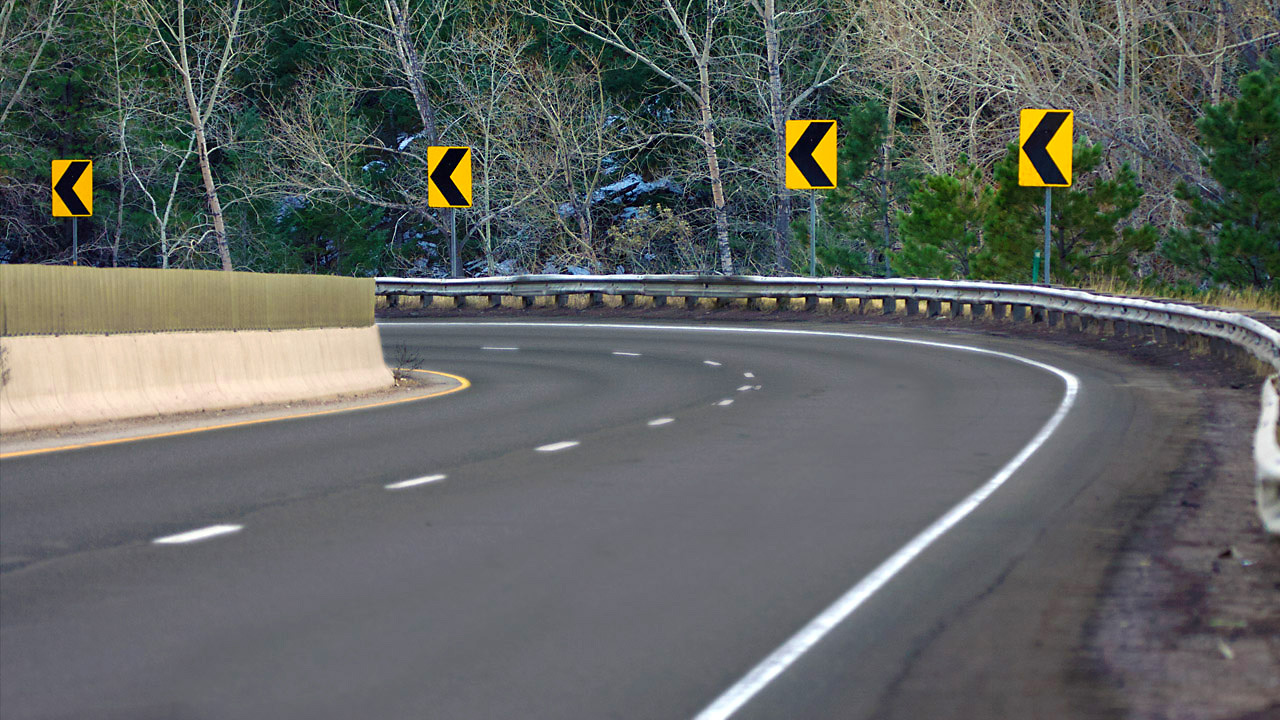
Curve warning signs are cost-effective tools proven to reduce crashes on horizontal curves, where 25 percent of traffic fatalities occur. Watch a digital slide show on using curve warning signs to reduce lane departure crashes.
In Iowa, Johnson County is among the localities that have been proactive in evaluating safety data to identify projects to reduce roadway departure crashes. The planning process to develop the county's Local Road Safety Plan included mapping roadway departures. "This is a great tool that provides a visual of where corrections are needed that you can take to elected officials," said Greg Parker, county engineer.
Among Johnson County's tactics to reduce rural roadway departures are road safety audits, in which a multidisciplinary team identifies and recommends solutions to safety issues at a site. An audit conducted at a 90-degree turn where lane departures were occurring found issues with the placement, height, and size of warning signs. "We made corrections and roadway departures at the turn were reduced to almost zero," said Parker. Other countermeasures the county uses include paved shoulders, rumble strips, high-friction surface treatments, and the SafetyEdge℠. "A combination of any or all of these safety countermeasures is beneficial," Parker said.

Rumble strips—milled or raised elements on the pavement—alert drivers through vibration and sound that their vehicles have left the travel lane. View "Rumble Strips: The Sweet Sound of Safety" video.
Champaign County, OH, collaborated with the Ohio Department of Transportation (ODOT) and other stakeholders to develop a Champaign County Road Safety Plan. The rural county started the process by analyzing 10 years of crash data, much of it from ODOT. "We decided we needed to look at more than just the county road system," said Stephen McCall, county engineer. "We looked at the road system in its entirety, including State, township, and municipal roads."
The county convened meetings with stakeholders from law enforcement, emergency medical services, schools, city engineer offices, and elected officials to review the data and get input on safety goals, strategies, and projects. "Stakeholders were an important part of the discussion," said McCall. The county will implement the plan over 5 years, while evaluating annually whether the programs and projects are reducing fatalities and severe crashes.
Watch a FoRRRwD overview video on the benefits of addressing rural roadway departures systemically.
Go to the EDC events page to register for webinars on FoRRRwD strategies.
Visit FHWA's roadway departure safety page to learn about strategies to keep vehicles on the roadway, provide for safe recovery, and reduce crash severity.
Contact Cathy Satterfield of the FHWA Office of Safety or Dick Albin of the FHWA Resource Center for information and technical assistance.
When highway agencies apply the advanced project bundling techniques promoted in Every Day Counts round five (EDC-5), they optimize resources, save delivery time, and address system performance goals while keeping crucial transportation assets in good repair.
"The Federal Highway Administration identified best practices from around the country to develop a 10-step approach to bundling," said David Unkefer, FHWA construction and project manager engineer. "States have also demonstrated a more programmatic and strategic approach to routinely maximize economies of scale."
Project bundling is guided by selection criteria for capitalizing on benefits. "This strategic approach reduces costs and saves design and construction time," said Romeo Garcia, FHWA bridge construction engineer. "Also, combining several projects into a single contract award stretches taxpayer dollars." When bundling criteria are applied early in project programming, agencies can target high return on investment in asset management while realizing savings throughout project development and construction.
Bundled projects may be procured with a variety of contracting methods and agreement types, such as design-bid-build, indefinite delivery/ indefinite quantity, construction manager/general contractor, and public-private partnerships (P3). Bundles may cover one county or the entire State and incorporate innovative construction techniques and financing tools. Contracts may combine work types, such as design, preservation, or replacement. A project bundling program paves the way to achieve agency goals.
"Project bundling is not just for large contracts. Bundles have ranged from two to 300 projects," said Garcia. "Depending on an agency's needs, smaller bundles can help keep the local contracting community engaged, while larger bundles offer opportunities for small and disadvantaged businesses."
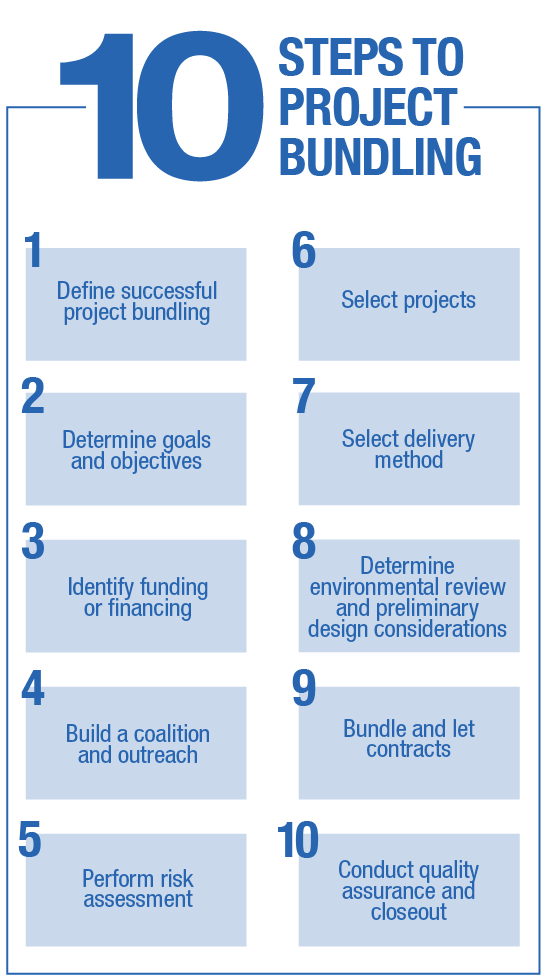
Twenty-three States are working to advance implementation of project bundling during EDC-5, including a number of agencies that use bundling to achieve savings and efficiency on bridge projects.
The Pennsylvania Department of Transportation (PennDOT) developed a local bridge bundling program that targets replacement of singlespan bridges. To maximize efficiency, PennDOT groups bridges with similar details in a bundle. The goal is to use one design for all structures in a bundle, replacing multiple bridges of varying lengths with one standard-length bridge design. Bundles may be large, but contracts are developed in groups of 7 to 10 to optimize construction crews.
PennDOT has documented significant savings in design and construction from using this bundling method—up to 50 percent on design cost and up to 15 percent on construction cost compared to traditional single-bridge projects. Because of the savings, PennDOT waives the normal 5 percent local public agency contribution to a project, making the program popular among localities.
Freeway lighting is another project type that can benefit from bundling. In a metropolitan Detroit project, the Michigan Department of Transportation entered into a P3 agreement to improve lighting on five interstate corridors where just 70 percent of the lights functioned.
The project bundled the replacement and maintenance of 15,000 lights for 15 years. The project improved freeway visibility and safety while achieving energy savings by replacing high-pressure sodium and metal halide lights with efficient light-emitting diode fixtures. Other transportation agencies—including those in Arizona, the District of Columbia, Florida, Illinois, Massachusetts, and Virginia—have bundled projects involving 15,000 to 70,000 streetlights.
The Indiana Department of Transportation (INDOT) reports freeing up to $50 million a year for other projects from savings on its bundling program. INDOT developed models for selecting the best projects to bundle that other agencies can adapt to their own needs. The agency conducted a study that examined the effects of contract size and other factors on the cost savings that can be achieved by bundling. Researchers used 9 years of data from 1,997 bridge projects delivered via 715 INDOT contracts.
The study confirmed the benefits of bundling and produced models INDOT can use to select the most appropriate projects to bundle in the future. Researchers documented how unit costs decline as project bundle size increases. They also found that the degree to which projects in a bundle are similar is important in reducing project cost. Using study results, INDOT developed business rules for bundling strategically during early project programming, institutionalizing a process to allow for greater economies of scale throughout project delivery.
Watch an Innovation Spotlight video on how advanced approaches to project bundling leverage economies of scale and maximize agency resources.
See FHWA's Bundled Facilities Overview web page for case studies, best practices, and lessons learned on bundling programs.
Consult the Bridge Bundling Guidebook for bundling case studies and information applicable to any type of roadway project.
Contact Romeo Garcia of the FHWA Office of Infrastructure or David Unkefer of the FHWA Resource Center for information and technical assistance.
Rapid adoption of innovative technologies and practices is helping transportation departments in Washington and Utah achieve strategic goals and serve their communities.
Thinking innovatively and working efficiently and safely are always good business practices, Federal Highway Administration Executive Director Thomas Everett told participants in April's national State Transportation Innovation Council (STIC) webcast. "Now is no different," he said. "Our transportation system is fulfilling a critical role in serving communities and keeping roads operational."
Times like these serve as a catalyst for creative thinking, Everett said. "We've largely shifted to conducting business virtually, yet we're being strategic in the continued operation of our system. Collectively, we've proved that the transportation community is nimble in the wake of changing events."
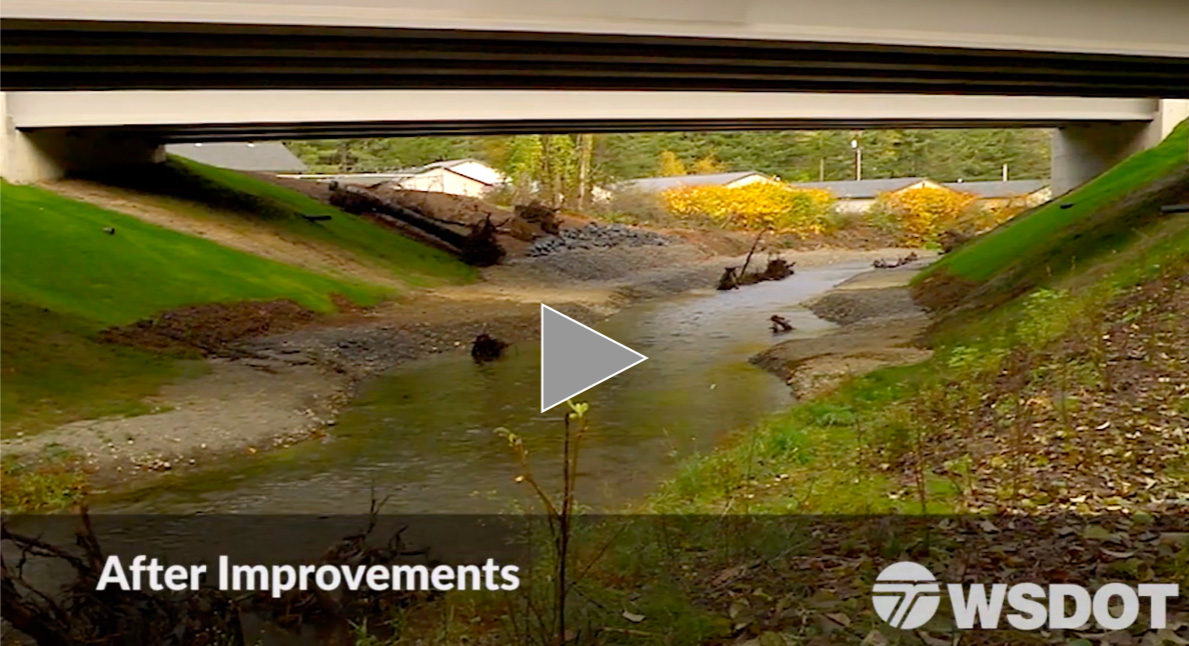
View a video on the Washington State Department of Transportation's efforts to correct barriers along State highways that block salmon and other fish from migrating.
The Washington State Department of Transportation (WSDOT) uses innovations such as project bundling, design-build, and accelerated bridge construction (ABC) to meet fish passage requirements for culverts on State roads. WSDOT's fish passage program eliminates barriers along highways that restrict access to habitat. Since 2013, the State has accelerated barrier correction on streams in the Puget Sound and Olympic Peninsula areas.
"We're achieving efficiencies with innovation, mostly in contracting and construction techniques," said WSDOT Transportation Secretary Roger Millar. "We're using design-build delivery on bundles of projects. That gives us the opportunity to bring private sector innovations to bear."
The design-build team on one project suggested rerouting a stream that crossed a State road to create a less-expensive crossing on a local road that guides fish to their destination faster. To avoid long road closures and detours on other projects, WSDOT applied ABC techniques such as building foundations during nighttime closures, restoring traffic during the day, and installing prefabricated structural elements on weekends. To date, WSDOT has completed 345 fish passage barrier corrections that allow access to more than 1,000 miles of fish habitat.
"Our mission is innovating transportation solutions that strengthen Utah's economy and enhance quality of life," said Nathan Lee, director of technology and innovation at the Utah Department of Transportation (UDOT). Among the innovations UDOT uses to further this mission are unmanned aerial systems (UAS), virtual public involvement, and digital delivery.
UDOT's UAS program grew from 1 certified pilot and four UAS in 2016 to 31 pilots and 41 drones today. "UAS are used in nearly every part of our department," said UDOT UAS Program Manager Paul Wheeler, for applications such as incident management, inspection, and mapping.
The agency found that using UAS to gather incident scene data enabled responders to clear crashes four times faster than traditional methods. This is important because the likelihood of a secondary crash increases 2.8 percent each minute a primary incident stays on the road, every minute a lane is blocked increases delay after the incident is cleared by a factor of four, and traffic crashes kill more responders than any other line-of-duty cause of death.
UDOT introduced virtual public involvement techniques such as videos and story maps to supplement traditional strategies and enhance its ability to communicate clearly and concisely. "Virtual public involvement expands the ability for many people to participate, but traditional and in-person outreach tools should still be in the mix," said Eileen Barron, UDOT strategic communications manager.

Three factors contributed to UDOT's success in virtual public involvement, Barron said. A focus on decentralizing UDOT's decision-making creates an openness to consider a variety of engagement options at the local level. The agency also emphasizes people and principles over projects, which allows project teams to determine which involvement tools would work best for their communities. "Finally, UDOT has invested in building a culture of innovation," said Barron. "That culture of being open to trying new things is part of our day-to-day work."
For the past six years, UDOT has focused on transforming project delivery with innovation, said Becky Hjelm, e-business project manager. UDOT used STIC Incentive funds to capture lessons learned on its first project advertised using a three-dimensional (3D) model as a legal document. From 2017 to 2020, UDOT awarded 11 projects with the 3D model as a legal document.
Accelerated Innovation Deployment (AID) Demonstration funds are helping UDOT build a repeatable process for digital delivery. The process will include standards, organization, storage, and communication of data throughout the road construction life cycle. "To support this work, we created a single site with the necessary resources, documentation, and training to help us achieve repeatability," said Hjelm.
Apply for STIC Incentive funds to offset the cost of standardizing innovative practices. August 7 is the deadline for 2020 funding requests
Apply for AID Demonstration funds to support innovation deployment on any phase of a highway project.
Contact your State STIC or Sara Lowry of the FHWA Center for Accelerating Innovation to get involved in the STIC network.
The Michigan Department of Transportation (MDOT) and Michigan Technical University are collaborating to expand use of unmanned aerial systems (UAS) to meet systems operations and maintenance data needs.
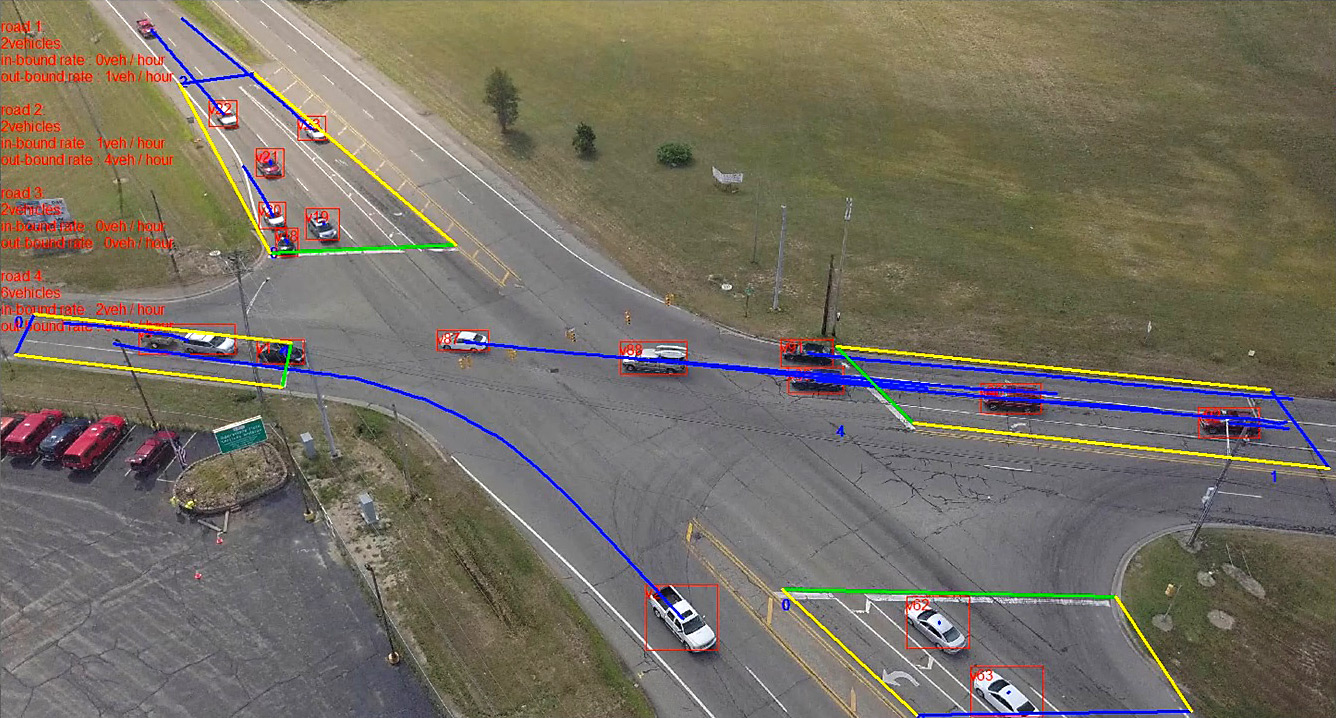
A UAS-based traffic monitoring algorithm helps the Michigan Department of Transportation generate data from traffic video.
MDOT and Michigan Tech demonstrated how UAS collection of aerial and thermal imagery, light detection and ranging (LiDAR) data, and video can support decision making on infrastructure condition assessment, asset management, and systems operations. They developed several tools that will enable MDOT to integrate UAS data into the agency's everyday workflows.
One tool uses high-resolution aerial imagery and digital elevation models useful in nondestructive evaluation of bridges. UAS-collected imagery is processed and passed through an algorithm that automatically detects spalls—concrete surface defects—in a bridge deck. Known as the "spallgorithm," the algorithm identifies the precise location, depth, surface area, and volume of spalls. This allows MDOT staff to obtain bridge defect information while spending less time on bridge sites, improving safety. The team also developed an algorithm that analyzes UAS-collected thermal imagery to distinguish delamination—concrete subsurface defects—from healthy areas of a bridge deck.
Using UAS data, the project team created three-dimensional (3D) digital models that can be used for building information modeling (BIM), a 3D model-based process that supports decision making on built assets. BIM can provide MDOT bridge managers with a method to document maintenance information over the lifetime of a bridge.
The team is working on a UAS-based traffic monitoring algorithm to provide quantitative data from live-streamed traffic video. Data that can be generated from traffic video include vehicle trajectory, speed, and traffic volume for use in traffic studies, capacity analysis, and other applications.
MDOT is also developing a best practices guide for collecting LiDAR data based on the differences between ground- and UAS-based LiDAR systems, which use lasers to rapidly acquire 3D geometric data. The guide will help users determine appropriate uses of UAS LiDAR in design survey projects.
See the Michigan Tech Research Institute website for details on the collaboration to enable MDOT to use UAS in day-to-day operations.
Contact James Gray of the Federal Highway Administration Office of Infrastructure or John Haynes of the FHWA Utah Division for information and technical assistance on UAS.
The Arizona Department of Transportation (ADOT) set a goal to institutionalize the use of two-dimensional (2D) hydraulic modeling tools to design safer, more cost-effective, and more resilient structures on waterways. To meet their goal, ADOT developed standardized 2D modeling project assessment scoping language, bridge hydraulic guidance, and stormwater design guidance. ADOT has nine pilot projects involving 2D hydraulic modeling identified, underway, or completed. ADOT reports that over 2 years, it leveraged $100,000 in State Transportation Innovation Council Incentive funds to gain $400,000 in design engineering benefits on projects. This was achieved by including funds in project design budgets to use 2D hydraulic modeling instead of traditional one-dimensional methods.
Transportation agency staffs across the country are working remotely, presenting a challenge to States trying to keep road construction projects on schedule. e-Construction tools and technologies have allowed the majority of States to continue work on project designs and bid packages and address contract modifications and requests for information in real time, keeping projects on track despite these challenges. The Delaware Department of Transportation (DelDOT) has required the use of connected tablets and laptops since 2017. These devices, along with e-Construction software, allow DelDOT to work nearly 100 percent remotely from the field, home, or wherever required with minimal need to go to an office. This is due, in part, to the department storing all construction project documents in a web-accessible format. DelDOT also uses electronic signatures for many documents, reducing the need to obtain signatures on paper.
Joint development is a value capture technique that develops a transportation project and adjacent real estate or infrastructure along with a private developer. On these projects, the developer provides money for or implements public transportation improvements co-located with real estate development. In Denver, an agreement with a private developer is helping fund Colorado's largest-ever transportation project. The Central 70 project will replace a 50-year-old, 2-mile viaduct with a lowered interstate section capped by a 4-acre park uniting the Swansea and Elyria neighborhoods. Plans include redesigned shoulders and interchanges to reduce crashes and improve safety while cutting travel time by up to one-half by 2035.
The Wyoming Department of Transportation (WYDOT) developed a hands-free mobile application for reporting highway conditions. The app allows citizens and WYDOT staff to submit text and images, which are geolocated and sent to the traffic operations center for verification. Once submissions are verified, the system has a feature that allows the information to be automatically pushed back to app users as well as to the 511 traveler information website. This will help WYDOT identify appropriate resources and reduce response times and the potential for secondary crashes. WYDOT is also developing a prototype function to alert emergency managers in each county of relevant crowdsourced reports.
In EDC Outtakes—a series of short interview videos—transportation professionals provide insights on Every Day Counts innovations.
In this edition, Matthew Enders, local programs technical services manager for the Washington State Department of Transportation, talks about proven, affordable countermeasures to reduce rural roadway departures.
EDC Outtake Series on Reducing Rural Roadway Departures featuring Matthew Enders.
In this edition, Mark Traynowicz, State bridge engineer for the Nebraska Department of Transportation, discusses how project bundling helps counties achieve economies of scale on bridge projects.
EDC Outtake Series on Reducing Rural Roadway Departures featuring Mark Traynowicz.
Innovator, published by the FHWA Center for Accelerating Innovation, advances implementation of innovative technologies and accelerated project delivery methods in the highway industry. Its audience is transportation professionals in highway agencies, trade and research groups, academia and the private sector, and the driving public.
Elaine L. Chao, Secretary, U.S. DOT
Nicole R. Nason, Administrator, FHWA
Thomas Harman, Director
Jeffrey Zaharewicz, Senior Advisor
Sara Lowry, Program Coordinator
Fawn Thompson, Program Coordinator
Julie Zirlin, Program Manager
Nichole Causey, Marketing Specialist
Ellen Schweppe, Managing Editor
James Cline, Jr., Designer
Pat Holcombe, Designer
Rodney Walker, Designer
Access past issues in the Innovator Archive and have the next issue sent to your mobile device by texting "FHWA Innovation" to 468311. Email reprint requests to Nichole Causey.